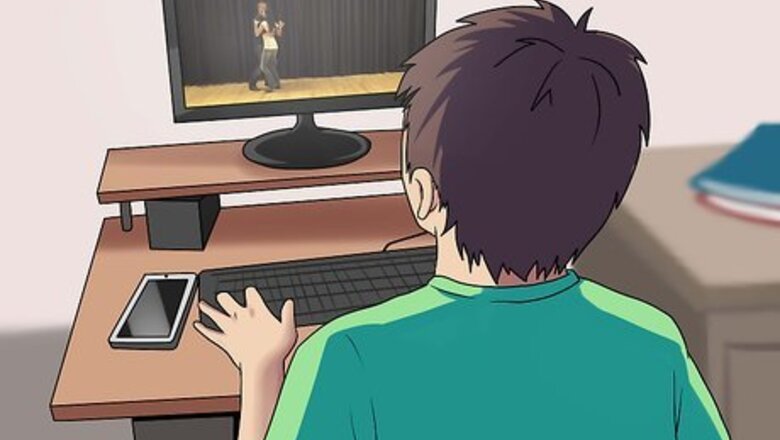
views
Getting Started
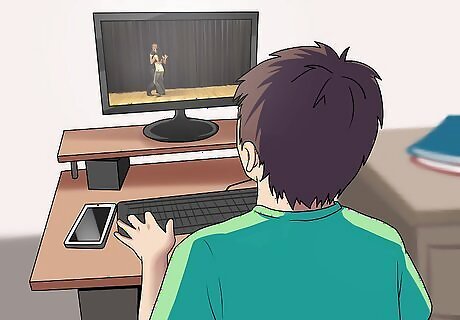
Watch videos of people dancing the Country Two-Step. The Country Two-Step, or Texas Two-Step, is a fairly simple dance to learn, but you should get familiar with the types of movements you'll be making. The dance itself is modeled on "shuffle-step" footwork with minimal upper body movement. Sites like YouTube offer plenty of instructional videos of people dancing the Country Two-Step. If you have a dance partner in mind, get them to watch the videos with you. It may also help to read instructions about the steps, or look at pictures of the footwork.

Find the beat. Pick out a country song you like and give it a listen. Pay attention to the rhythm. Country music tends to feature a heavy, easy to find beat, usually in 4/4 time. You should be able to count 1, 2, 3, 4 or clap your hands with ease.
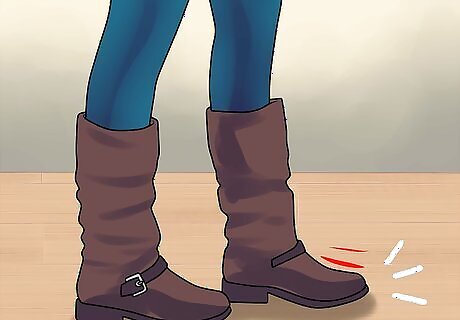
Break the beat down. Tap your foot to the beat. When your foot falls, that's a "1." When your foot rises, that's an "and." In music, this is known as "subdivision." When you count, count as follows: 1, and, 2, and, 3, and...
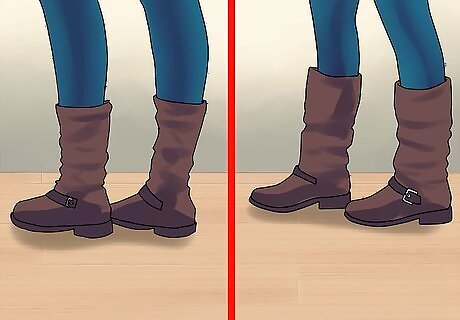
Practice the steps. The basic two-step follows a "quick, quick, slow, slow," pattern where the first two steps (the quicks) are twice as fast as the last two steps (the slows). The first "quick" step will fall on a "1." The second "quick" step will fall on an "and." The first "slow" step will fall on "2, and." The second "slow step will fall on "3, and."
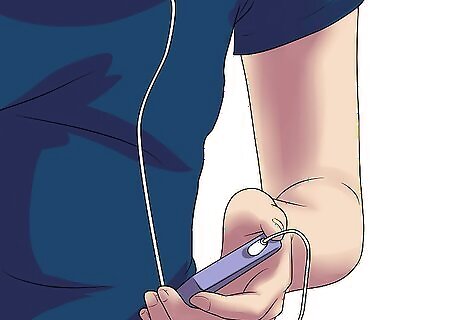
Find a song to practice to. With the steps in mind, it's time to put them to music. While it is possible to practice to nearly any country song, Dale Watson released a song titled "Quick, Quick, Slow, Slow" specifically to help people learn the two-step. Other popular two-Step tracks are "If I Could Make a Living," by Clay Walker, and "Jambalaya (On the Bayou)," by Hank Williams, Sr. As you listen to the music, think of the steps in relation to the beat. It may be easier to start with a slower tempo song to help establish the beat.
Dancing the Two-Step
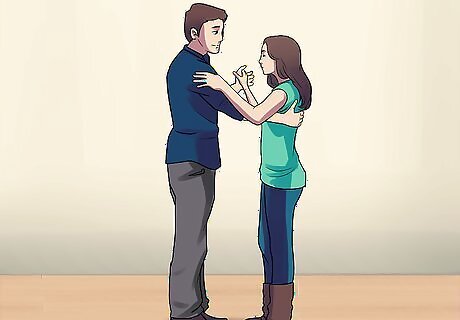
Establish your frame. In dancing, "frame" refers to the shape you and your partner make. In order to dance well, you need to have a solid frame. For two-stepping, the most common frame is a traditional closed position. If you're leading, place your right hand on your partner's left shoulder blade, and your left arm out to the side. If you're following, place your left hand around your partner's right bicep. Grab their left hand with your right. Leave a few inches of space between you and your partner.
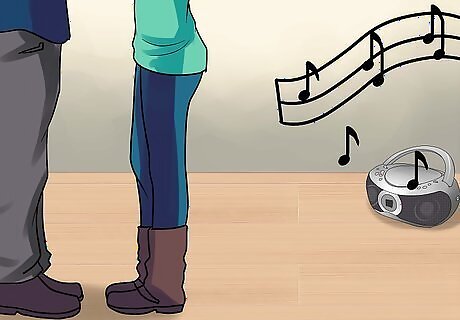
Move to the music. Dancing the two-step with a partner is not far off from practicing alone. The only difference is the follower will be reversing the steps. As the leader moves forward, the follower will simply step backward. The Country Two-Step always moves forward. Try not to sway your feet left or right. Maintain good posture when dancing. Don't look at your feet when dancing. Confidence is key!
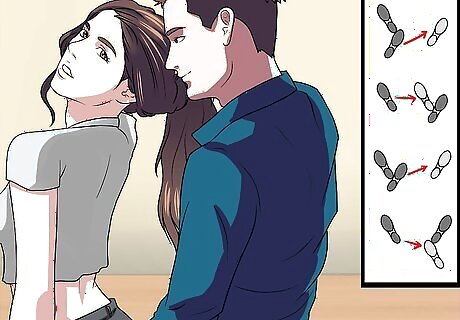
Know your role. A big part of two-stepping, and dancing in general, is being either a leader, or a follower. The leader guides the follower through the dance. If the leader steps forward with their left foot, the follower will step backward with theirs. If you're leading, don't push your partner. If you're following, wait until the lead moves before you take a step.
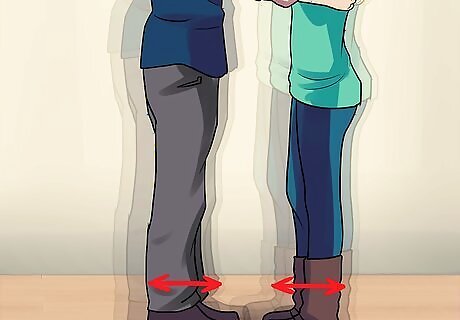
Keep it going! Right now, it might seem like you are just walking to the music. In order to transform these movements into a dance, keep it going across the floor. When dancing, progress counterclockwise around the dance floor. If you're dancing at a club, remember to follow the line, or flow, of dance. Pay attention to the other dancers around you.
Trying Advanced Two-Stepping and Variations
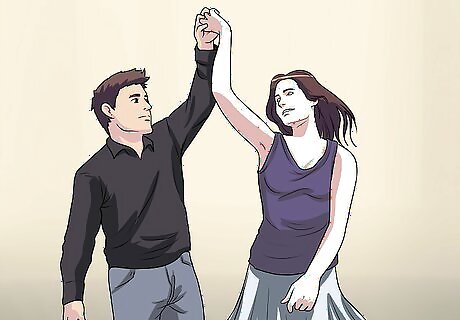
Incorporate turns and swings. The two-step takes a lot of cues from swing dancing. As such, all the spins, swings, and turns from swing dancing can be applied to two-stepping. To spin your partner, simply lift your left arm up and slightly to the right. The idea is to guide your partner under your arm.
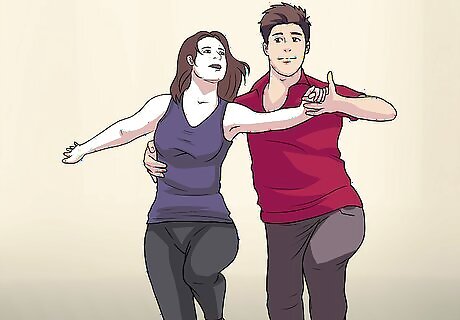
Practice the Shadow frame. In Shadow dancing both dancers face the same direction with the follower standing in front of the lead. Standing behind the follower, the lead places his or her right hand over the follower's stomach. The follower places his or her right hand over the lead's. Both the lead and the follower hold their left arms out loosely to the side, holding hands. In this position, the footwork is largely the same for both dancers, with the follower mirroring, or "shadowing," the lead, as the name suggests.
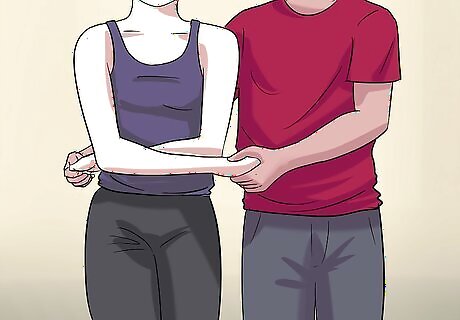
Practice the Wrap frame. Wrap is similar to shadow, except the dancers stand side-by-side. The lead passes his right arm behind the follower, holding their left hand at the follower's hip. The follower crosses their arms in front of them, placing their right hand in the lead's left.
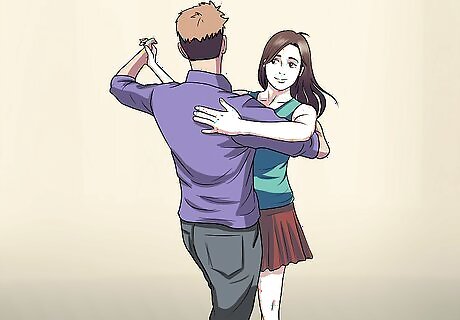
Practice the Promenade frame. Dancing Promenade style is similar to the traditional closed position, only instead of each dancer looking at each other, they are looking left. To set up in the Promenade frame, set up in the traditional closed frame but pull your partner in close. You should almost be touching at the waist. Turn your heads left and use your left arm as a guide across the dance floor.
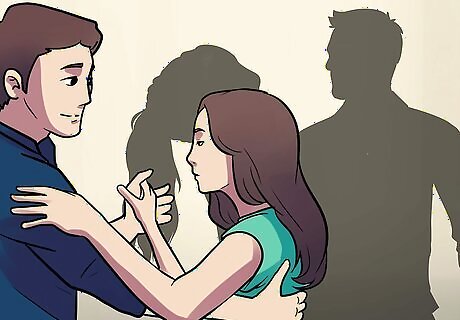
Mix it up! Feel free to experiment on the dance floor once you feel comfortable doing the basic two-step. Nearly any posture that can be applied to ballroom dancing, or swing dancing, can be applied to two-stepping. The most important thing is to have fun!




















Comments
0 comment